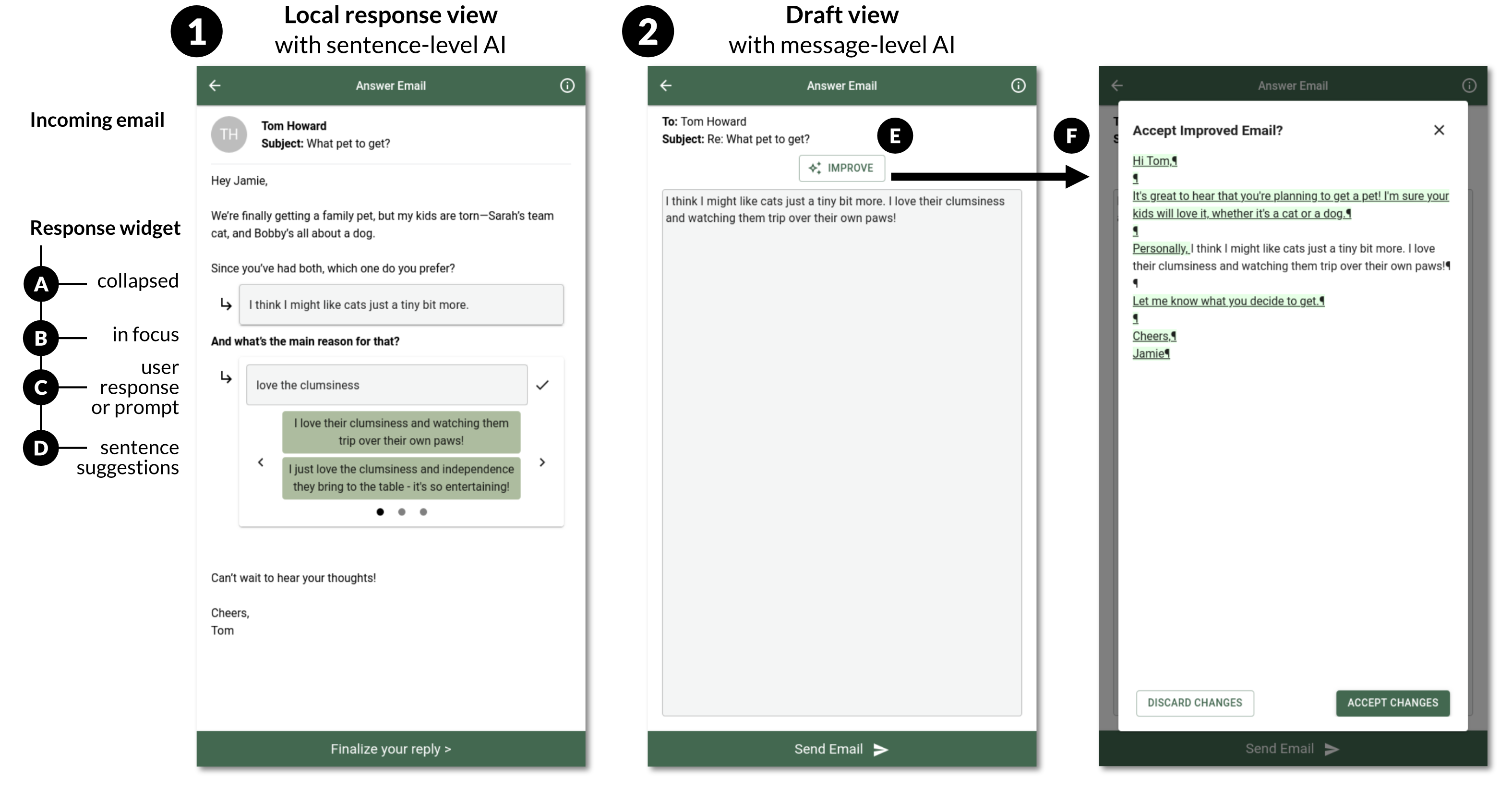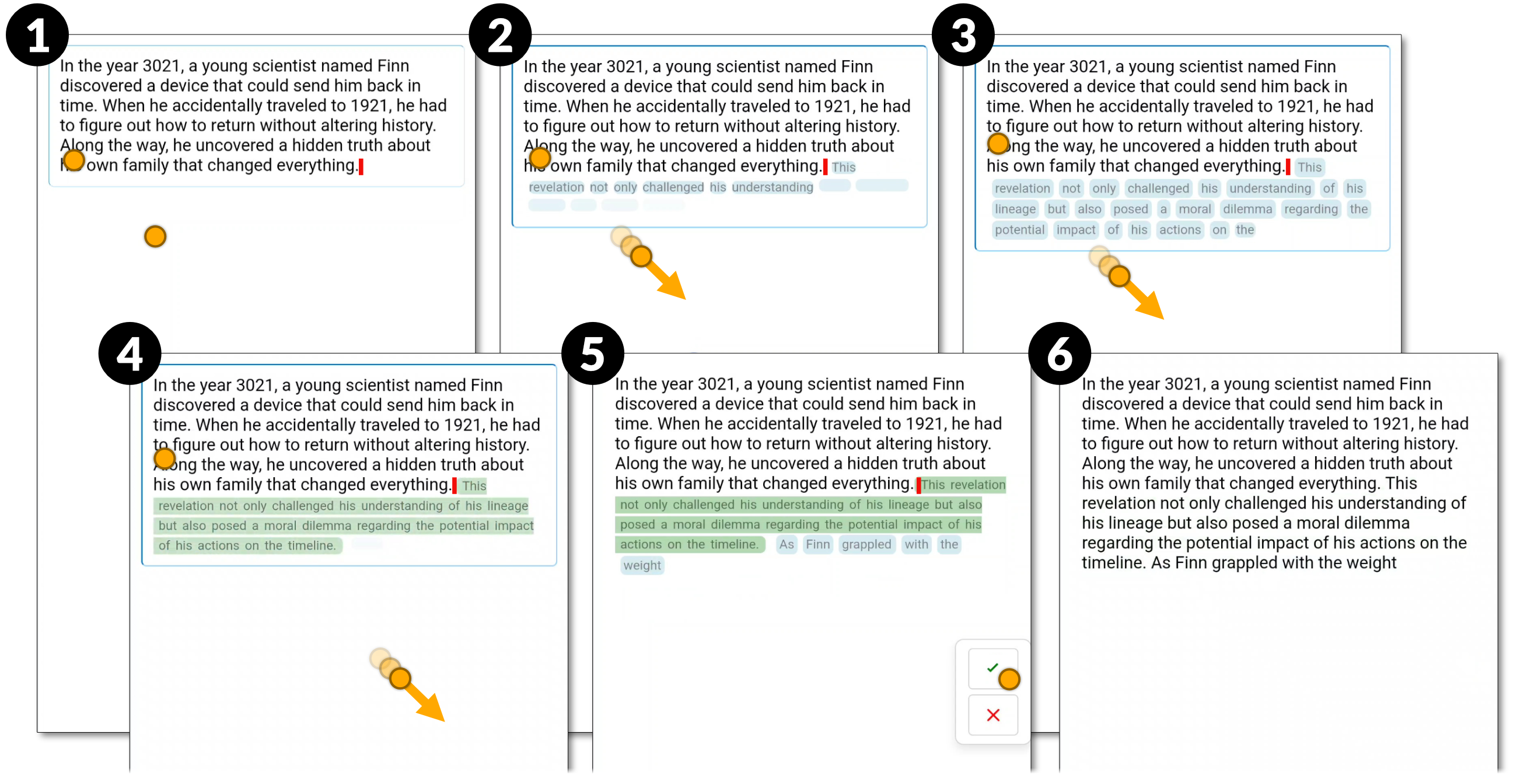We are in the process of curating a list of this year’s publications — including links to social media, lab websites, and supplemental material. Currently, we have 68 full papers, 23 LBWs, three Journal papers, one alt.chi paper, two SIG, two Case Studies, one Interactivity, one Student Game Competition, and we lead three workshops. One paper received a best paper award and 13 papers received an honorable mention.
Disclaimer: This list is not complete yet; the DOIs might not be working yet.
Your publication from 2025 is missing? Please enter the details in this Google Forms and send us an email that you added a publication: contact@germanhci.de
Closing the Loop between User Stories and GUI Prototypes: An LLM-Based Assistant for Cross-Functional Integration in Software Development
Felix Kretzer (human-centered systems lab, Karlsruhe Institute of Technology), Kristian Kolthoff (Institute for Software, Systems Engineering, Clausthal University of Technology), Christian Bartelt (Institute for Software, Systems Engineering, Clausthal University of Technology), Simone Paolo Ponzetto (Data, Web Science Group, University of Mannheim), Alexander Maedche (human-centered systems lab, Karlsruhe Institute of Technology)
Abstract | Tags: Full Paper, Writing & Coding Assistance | Links:
@inproceedings{Kretzer2025ClosingLoop,
title = {Closing the Loop between User Stories and GUI Prototypes: An LLM-Based Assistant for Cross-Functional Integration in Software Development},
author = {Felix Kretzer (human-centered systems lab, Karlsruhe Institute of Technology), Kristian Kolthoff (Institute for Software and Systems Engineering, Clausthal University of Technology), Christian Bartelt (Institute for Software and Systems Engineering, Clausthal University of Technology), Simone Paolo Ponzetto (Data and Web Science Group, University of Mannheim), Alexander Maedche (human-centered systems lab, Karlsruhe Institute of Technology)},
url = {https://h-lab.win.kit.edu/, website
https://www.linkedin.com/company/iism-kit, linkedin},
doi = {10.1145/3706598.3713932},
year = {2025},
date = {2025-04-26},
urldate = {2025-04-26},
abstract = {Graphical user interfaces (GUIs) are at the heart of almost every software we encounter. GUIs are often created through a collaborative effort involving UX designers, product owners, and software developers, constantly facing changing requirements. Historically, problems in GUI development include a fragmented, poorly integrated tool landscape and high synchronization efforts between stakeholders. Recent approaches suggest using large language models (LLMs) to recognize requirements fulfillment in GUIs and automatically propose new GUI components. Based on ten interviews with practitioners, this paper proposes an LLM-based assistant as a Figma plug-in that bridges the gap between user stories and GUI prototyping. We evaluated the prototype with 40 users and 40 crowd-workers, showing that the effectiveness of GUI creation is improved by using LLMs to detect requirements' completion and generate new GUI components. We derive design rationales to support cross-functional integration in software development, ensuring that our plug-in integrates well into established processes.},
keywords = {Full Paper, Writing & Coding Assistance},
pubstate = {published},
tppubtype = {inproceedings}
}
Content-Driven Local Response: Supporting Sentence-Level and Message-Level Mobile Email Replies With and Without AI
Tim Zindulka (University of Bayreuth), Sven Goller (University of Bayreuth), Florian Lehmann (University of Bayreuth), Daniel Buschek (University of Bayreuth)
Abstract | Tags: Full Paper, Writing & Coding Assistance | Links:
@inproceedings{Zindulka2025ContentdrivenLocal,
title = {Content-Driven Local Response: Supporting Sentence-Level and Message-Level Mobile Email Replies With and Without AI},
author = {Tim Zindulka (University of Bayreuth), Sven Goller (University of Bayreuth), Florian Lehmann (University of Bayreuth), Daniel Buschek (University of Bayreuth)},
url = {https://www.hciai.uni-bayreuth.de/en/index.html, website},
doi = {10.1145/3706598.3713890},
year = {2025},
date = {2025-04-26},
urldate = {2025-04-26},
abstract = {Mobile emailing demands efficiency in diverse situations, which motivates the use of AI. However, generated text does not always reflect how people want to respond. This challenges users with AI involvement tradeoffs not yet considered in email UIs. We address this with a new UI concept called Content-Driven Local Response (CDLR), inspired by microtasking. This allows users to insert responses into the email by selecting sentences, which additionally serves to guide AI suggestions. The concept supports combining AI for local suggestions and message-level improvements. Our user study (N=126) compared CDLR with manual typing and full reply generation. We found that CDLR supports flexible workflows with varying degrees of AI involvement, while retaining the benefits of reduced typing and errors. This work contributes a new approach to integrating AI capabilities: By redesigning the UI for workflows with and without AI, we can empower users to dynamically adjust AI involvement.},
keywords = {Full Paper, Writing & Coding Assistance},
pubstate = {published},
tppubtype = {inproceedings}
}
CorpusStudio: Surfacing Emergent Patterns In A Corpus Of Prior Work While Writing
Hai Dang (University of Bayreuth), Chelse Swoopes (Harvard University), Daniel Buschek (University of Bayreuth), Elena L. Glassman (Harvard University)
Abstract | Tags: Full Paper, Writing & Coding Assistance | Links:
@inproceedings{Dang2025Corpusstudio,
title = {CorpusStudio: Surfacing Emergent Patterns In A Corpus Of Prior Work While Writing},
author = {Hai Dang (University of Bayreuth), Chelse Swoopes (Harvard University), Daniel Buschek (University of Bayreuth), Elena L. Glassman (Harvard University)},
url = {https://www.hciai.uni-bayreuth.de/en/index.html, website},
doi = {10.1145/3706598.3713974},
year = {2025},
date = {2025-04-26},
urldate = {2025-04-26},
abstract = {Many communities, including the scientific community, develop implicit writing norms. Understanding them is crucial for effective communication with that community. Writers gradually develop an implicit understanding of norms by reading papers and receiving feedback on their writing. However, it is difficult to both externalize this knowledge and apply it to one's own writing. We propose two new writing support concepts that reify document and sentence-level patterns in a given text corpus: (1) an ordered distribution over section titles and (2) given the user's draft and cursor location, many retrieved contextually relevant sentences. Recurring words in the latter are algorithmically highlighted to help users see any emergent norms. Study results (N=16) show that participants revised the structure and content using these concepts, gaining confidence in aligning with or breaking norms after reviewing many examples. These results demonstrate the value of reifying distributions over other authors’ writing choices during the writing process.},
keywords = {Full Paper, Writing & Coding Assistance},
pubstate = {published},
tppubtype = {inproceedings}
}
Exploring Mobile Touch Interaction with Large Language Models
Tim Zindulka (University of Bayreuth), Jannek Sekowski (University of Bayreuth), Florian Lehmann (University of Bayreuth), Daniel Buschek (University of Bayreuth)
Abstract | Tags: Full Paper, Writing & Coding Assistance | Links:
@inproceedings{Zindulka2025ExploringMobile,
title = {Exploring Mobile Touch Interaction with Large Language Models},
author = {Tim Zindulka (University of Bayreuth), Jannek Sekowski (University of Bayreuth), Florian Lehmann (University of Bayreuth), Daniel Buschek (University of Bayreuth)},
url = {https://www.hciai.uni-bayreuth.de/en/index.html, website},
doi = {10.1145/3706598.3713554},
year = {2025},
date = {2025-04-26},
urldate = {2025-04-26},
abstract = {Interacting with Large Language Models (LLMs) for text editing on mobile devices currently requires users to break out of their writing environment and switch to a conversational AI interface. In this paper, we propose to control the LLM via touch gestures performed directly on the text. We first chart a design space that covers fundamental touch input and text transformations. In this space, we then concretely explore two control mappings: spread-to-generate and pinch-to-shorten, with visual feedback loops. We evaluate this concept in a user study (N=14) that compares three feedback designs: no visualisation, text length indicator, and length + word indicator. The results demonstrate that touch-based control of LLMs is both feasible and user-friendly, with the length + word indicator proving most effective for managing text generation. This work lays the foundation for further research into gesture-based interaction with LLMs on touch devices.},
keywords = {Full Paper, Writing & Coding Assistance},
pubstate = {published},
tppubtype = {inproceedings}
}


